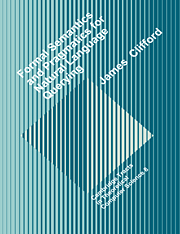5 - Overview of English Query Language QE-III
Published online by Cambridge University Press: 06 October 2009
Summary
Introduction
In the previous chapters of this book we have presented the historical relational database model HRDM as a means of formally incorporating a temporal semantics into the relational database model. We now turn our attention to the problem of providing a semantics for querying an hrdb using natural language, specifically English. Our method will be to define the semantics of queries expressed in English in terms of the semantics of the HRDM model already presented by defining a small query fragment as a Montague Grammar (as in [Mon73], henceforth PTQ.) The correlation between the database semantics we have already defined and this query language will be made explicit by providing the semantics of the query fragment via an indirect translation into the intensional logic ILs. The translations will provide for a completely extensional treatment of verbs, (i.e., there will be no verbs like “seek” which can be nonextensional in object position in the PTQ treatment). This treatment is dictated by the application of the Montague Semantics approach to a database environment, in which existence is tantamount to existence in the database. Through these translations, then, the model for ILs that we defined as induced by the database will also serve as the model for a formal definition of the semantics of the English queries. In addition to providing a semantic interpretation, which in model-theoretic terms is called its denotation, we also provide for each expression a pragmatic interpretation in a manner to be explained.
- Type
- Chapter
- Information
- Publisher: Cambridge University PressPrint publication year: 1990



